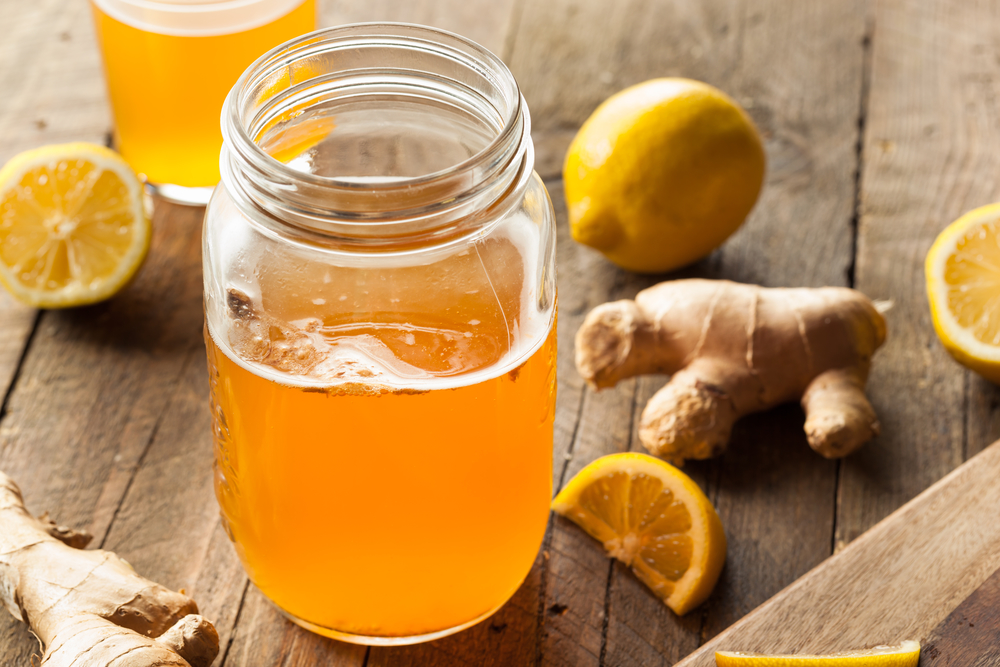Kombucha is one of those beverages people either love or maybe not so much.
Here at Natural Solutions for Healthy You, we love Kombucha. If not for the natural source of probiotics created through the fermentation process, then for the mad scientist feeling you get growing microorganisms in a jar on your kitchen counter (AKA the lab). It may not sound very appetizing to some, but if you love natural processes you may end up falling in love with the end product.
To make a batch of Kombucha at home you’ll need:
- a SCOBY — a symbiotic colony of bacteria and yeast — with starter tea
- 4 teabags of black tea
- 7 cups of filtered water
- 1/2 cup of natural raw sugar
- a 2 quart saucepan
- 2 quart glass jar (not plastic or metal)
- a wooden spoon
- a coffee filter
- a rubber band
How to Make Kombucha at Home
(enter mad scientist laughter — mwoo-hoo-ha-ha-ha!)
First, place 4 cups of filtered water in the sauce pan and bring to a boil. Remove from heat and the teabags cover and steep for 10 to 15 minutes. Remove teabags and add sugar. Stir with the wooden spoon until sugar is fully dissolved. Add remaining 3 cups of filtered water to cool the tea down more quickly and cool completely to room temperature.
Pour the tea into your glass jar and add your SCOBY and starter tea. Cover with the coffee filter and secure with the rubber band. Place the jar in a dark place and let it ferment at room temperature (approximately 70°) for 7 to 30 days, or until it tastes the way you’d like it to. The warmer the temperature, the less time it takes. The longer it ferments, the less sweet and more vinegary it becomes.
Pour your Kombucha into smaller glass jars or glass bottles and place in the refrigerator. Feel free to flavor it if you’d like. Drink and enjoy!
Be sure to save your SCOBY and a little starter tea for your next batch!
Tips for Great Kombucha
- Be sure to keep the jar out of direct sunlight even wrap it in a towel to be sure it’s kept in a dark place.
- Use regular granulated sugar. Natural is fine but don’t try to use alternative sweeteners such as honey.
- If you choose not to use a coffee filter, tightly woven cloth is a must! Cloth that is too loosely woven will allow fruit flies and other pests to enter your batch.
- If you don’t already have a SCOBY, you can purchase one at Cultures for Health or make your own SCOBY at home.


